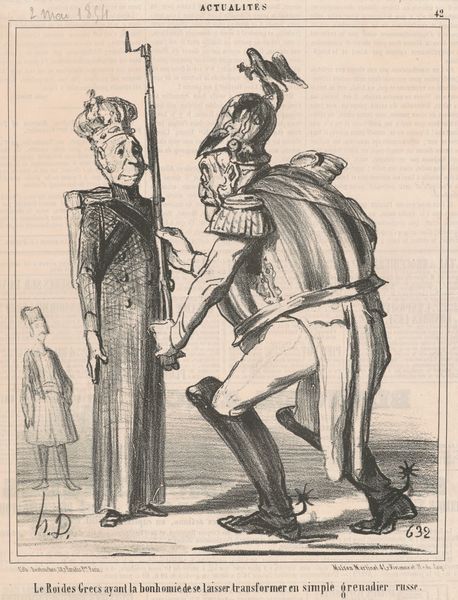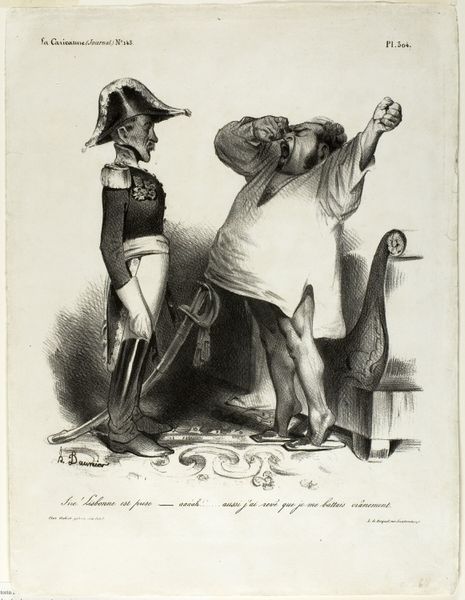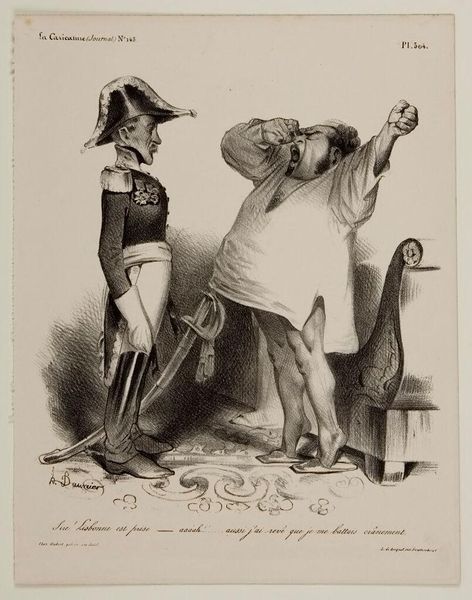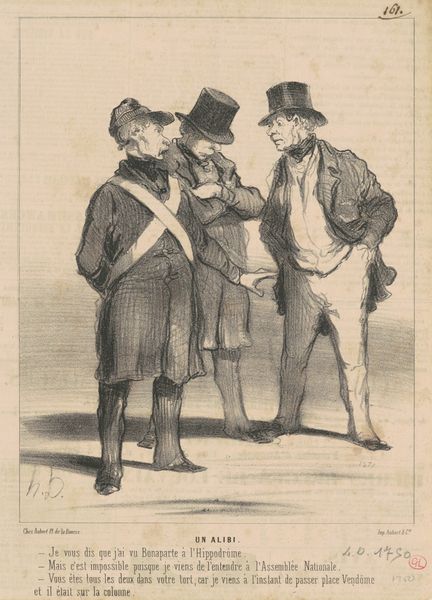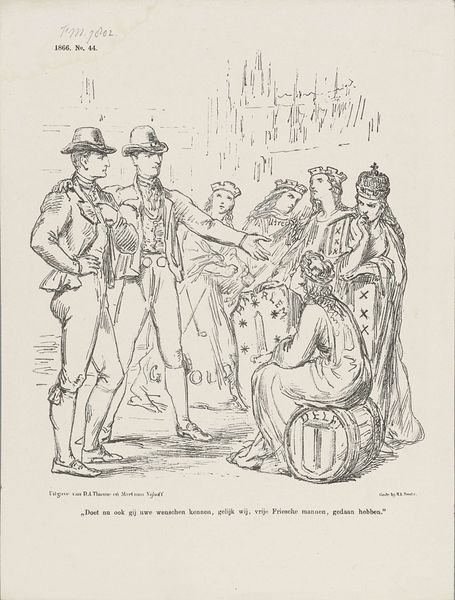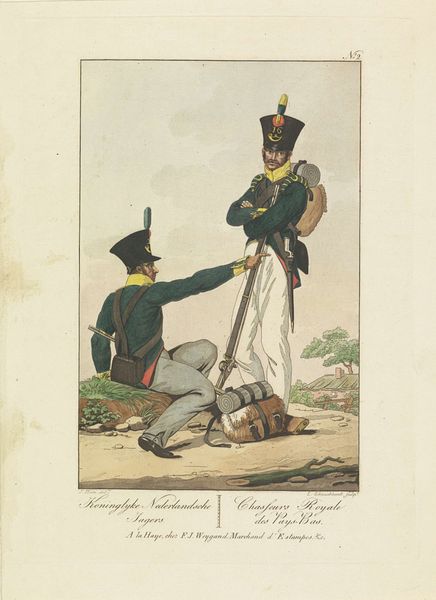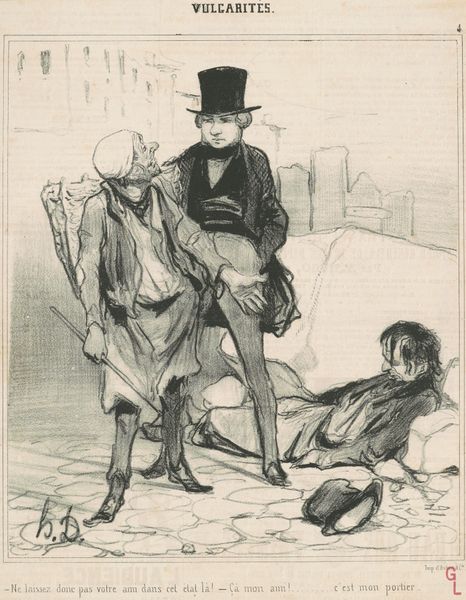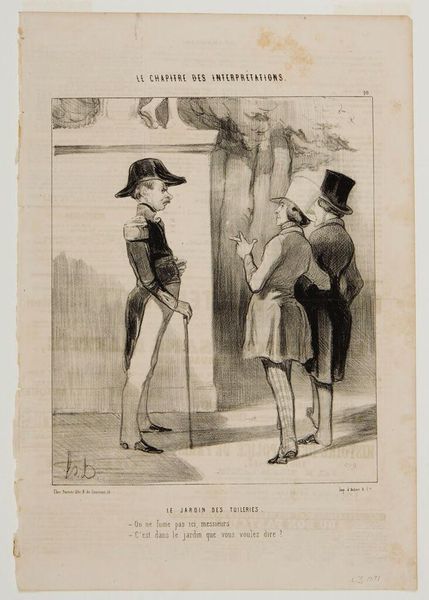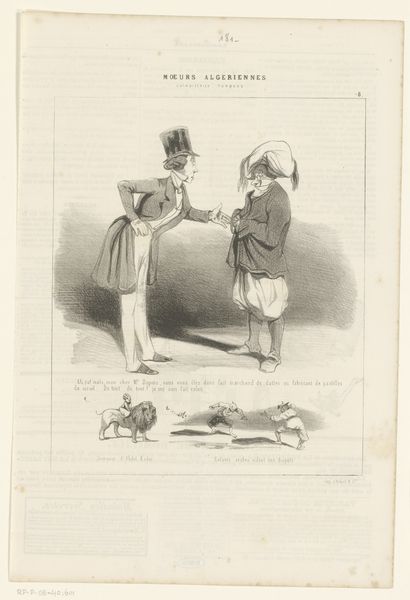
drawing, print, engraving
#
portrait
#
drawing
#
neoclacissism
# print
#
genre-painting
#
history-painting
#
engraving
#
realism
Dimensions: height 251 mm, width 160 mm
Copyright: Rijks Museum: Open Domain
Editor: Here we have "Twee Nederlandse soldaten in uniform," or "Two Dutch Soldiers in Uniform," by Leonardus Schweickhardt, sometime between 1793 and 1862. It looks like a print, an engraving perhaps, depicting two soldiers. There's a somewhat casual air about the piece, despite the military subject matter. What strikes you most about this work? Curator: It's fascinating how Schweickhardt utilizes the print medium to disseminate a specific image of Dutch military identity. Think about the context. This was a period of immense political upheaval in Europe, with shifting national boundaries and emerging national identities. These images served as a form of propaganda, aimed at fostering a sense of patriotism. How do you think this image would have functioned for the average citizen viewing it? Editor: So, less about individual soldiers and more about building national pride through a romanticized view of military life? Curator: Exactly! Notice the emphasis on detail in the uniforms and equipment. This is a characteristic of Neoclassicism, an attempt to impose order and reason during turbulent times. These details reinforce the idea of a structured, well-organized military. The prints would have been circulated, consumed and discussed in public spaces. Imagine the conversations it generated. How would it compare to images from the French Revolution? Editor: I see. These details lend authority to the image, a kind of 'proof' of the Dutch military's strength and competence. Compared to the chaos depicted in some French Revolutionary imagery, this is incredibly controlled. Almost idealized. Curator: Precisely. Schweickhardt isn't just showing us soldiers; he's constructing an idea of Dutch strength and national unity. By displaying these figures in a time of turmoil, the artist and distributor of the print likely intended to inspire belief and hope. This seemingly simple image tells a much larger political story about power, identity, and the role of art in shaping public opinion. Editor: This has shifted my view significantly. It's not just a picture of soldiers; it’s a carefully crafted message for its time. Thank you. Curator: A pleasure! It is always helpful to question our initial assumptions to better comprehend and communicate the piece.
Comments
No comments
Be the first to comment and join the conversation on the ultimate creative platform.
